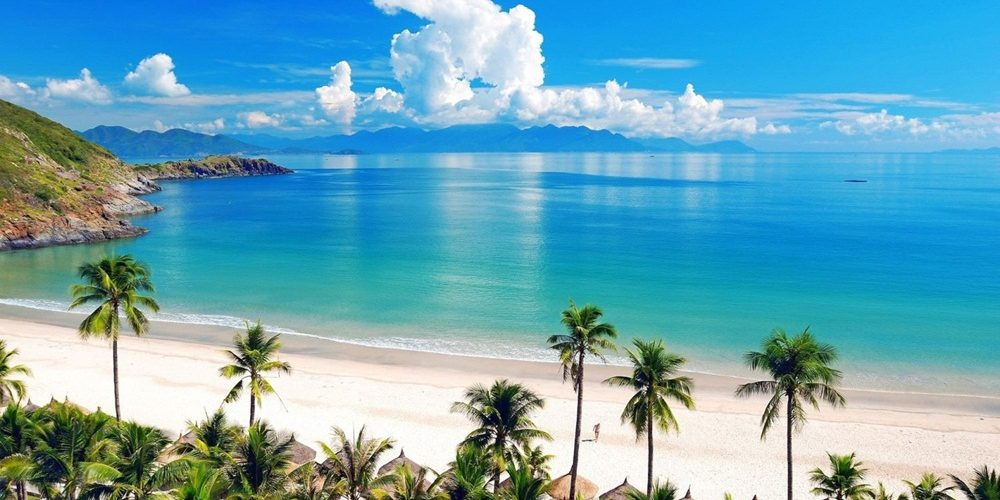The most important tourist attractions in Cuba

Cuba is a popular tourist destination known for its vibrant culture, beautiful beaches, historic landmarks, and picturesque scenery. The country’s tourism industry has been growing steadily in recent years, with millions of visitors traveling to Cuba annually.

One of the main draws for tourists is Cuba’s rich history and culture. The country is home to many UNESCO World Heritage Sites, including Old Havana, Trinidad, and the Viñales Valley. Visitors can explore the historic streets of Havana, enjoy traditional Cuban music and dance, and experience the unique blend of Spanish, African, and Caribbean cultures that make up Cuban society.
Cuba’s beautiful beaches are also a major attraction for tourists. The country has hundreds of miles of coastline, with some of the most popular beaches located in Varadero, Cayo Coco, and Guardalavaca. Visitors can enjoy swimming, snorkeling, diving, and other water sports, or simply relax on the sandy shores and soak up the sun.
Cuba is also known for its vibrant nightlife, with many bars, clubs, and restaurants offering live music and entertainment. Visitors can sample traditional Cuban cuisine, including dishes such as ropa vieja, arroz con pollo, and lechón asado, and enjoy a wide range of cocktails and other drinks.
However, it’s worth noting that tourism in Cuba is still subject to certain restrictions and regulations, particularly for American travelers due to the ongoing US embargo. Travelers should also be aware of safety concerns and take precautions to protect themselves and their belongings while in Cuba.
Sure! In addition to its cultural and natural attractions, Cuba is also known for its strong sense of community and hospitality. Visitors often remark on the warmth and friendliness of the Cuban people, who are known for their welcoming nature and love of conversation.
Cuba is home to a diverse range of accommodation options, from luxury hotels and resorts to budget-friendly casa particulares, which are private homes that offer rooms for rent. Many visitors opt to stay in casa particulares to experience Cuban culture firsthand and interact with local residents.
Aside from Havana, other popular tourist destinations in Cuba include Trinidad, a beautifully preserved colonial town with cobbled streets and colorful buildings; Viñales, a rural area known for its tobacco farms and limestone cliffs; and Cienfuegos, a coastal city with French-inspired architecture.
Cuba also offers a range of outdoor activities for visitors to enjoy, such as hiking in the Sierra Maestra Mountains, birdwatching in the Zapata Swamp, and exploring the coral reefs off the coast of Cayo Largo.
It’s important to note that while Cuba is generally considered a safe destination for tourists, visitors should take precautions to avoid theft and other crimes. In particular, it’s advisable to avoid carrying large amounts of cash or wearing expensive jewelry, and to be cautious when traveling alone or at night.
In terms of logistics, visitors to Cuba will need a tourist visa, which can typically be obtained through a travel agency or Cuban consulate. US citizens should be aware that travel to Cuba is subject to certain restrictions due to the ongoing embargo, although these restrictions have been relaxed somewhat in recent years.
Sure, here are some additional details about tourism in Cuba:
Currency: Cuba has two official currencies, the Cuban peso (CUP) and the convertible peso (CUC), which is pegged to the US dollar. Tourists generally use the CUC, which can be exchanged for other currencies at banks and exchange houses (known as cadecas). It’s important to note that there is a 10% surcharge for exchanging US dollars, so it’s often better to bring euros or Canadian dollars instead.
Internet and Communication: Cuba has limited internet access, and it can be expensive and slow. Visitors can purchase internet cards (known as tarjetas de internet) at ETECSA offices or hotels, which provide access to Wi-Fi hotspots. Cell phone coverage is generally good in urban areas, although roaming charges can be expensive. It’s also possible to rent a Cuban cell phone for use during your stay.
Transportation: Cuba has a well-developed transportation system, with buses, taxis, and rental cars available for visitors. The Viazul bus system is a popular choice for travelers, with comfortable coaches that connect major cities and tourist destinations. Taxis are also widely available, although it’s advisable to negotiate the fare in advance. Rental cars can be expensive and driving in Cuba can be challenging due to poor road conditions and limited signage.
Health and Safety: Cuba is generally considered a safe destination for tourists, with a low crime rate. However, visitors should still take precautions to avoid theft and other crimes, particularly in crowded areas or at night. It’s also important to take steps to protect your health, such as drinking bottled water, using insect repellent, and practicing good hygiene.
Overall, Cuba offers a unique and rewarding travel experience for those interested in history, culture, and natural beauty. While there are some logistical challenges to visiting the country, the rewards are well worth the effort.

Here are some more details about tourism in Cuba:
Climate: Cuba has a tropical climate, with warm temperatures throughout the year. The peak tourist season is from December to April, when the weather is dry and mild. The summer months (June to September) can be hot and humid, with occasional rain showers and the possibility of hurricanes.
Food and Drink: Cuban cuisine is a blend of Spanish, African, and Caribbean influences, with dishes that often feature rice, beans, pork, and seafood. Visitors can sample traditional Cuban dishes such as ropa vieja (shredded beef stew), moros y cristianos (rice and beans), and arroz con pollo (chicken and rice). Cuban cocktails such as the mojito, daiquiri, and Cuba Libre are also popular.
Culture and Arts: Cuba has a rich cultural heritage, with music, dance, and art playing an important role in society. Visitors can enjoy live music performances in bars and clubs throughout the country, as well as attend cultural events such as the Havana Biennial art exhibition and the International Jazz Plaza Festival.
Ecotourism: Cuba has a wealth of natural attractions, including national parks, beaches, and coral reefs. Visitors can participate in ecotourism activities such as birdwatching, hiking, and snorkeling, as well as learn about conservation efforts to protect endangered species such as the Cuban crocodile and the Cuban solenodon.
Community Tourism: In addition to traditional tourism, Cuba also offers community-based tourism experiences that allow visitors to interact with local residents and learn about Cuban culture and daily life. Examples include homestays in private homes, visits to community-run farms and cooperatives, and tours of local neighborhoods and cultural sites.
It’s also worth noting that Cuba is a rapidly changing country, with ongoing economic and political reforms that are likely to impact the tourism industry in the coming years. Visitors to Cuba should be prepared for a unique and dynamic travel experience that offers a glimpse into a country in transition.
Here are some more details about tourism in Cuba:
Historical and Political Significance: Cuba has played a significant role in world history, particularly in relation to its revolutionary past and its relationship with the United States. Visitors can explore historic sites such as the Museum of the Revolution in Havana and the Bay of Pigs Museum, which commemorate key events in Cuban history. They can also learn about the ongoing political and economic changes taking place in the country.
Sports: Cuba is known for its strong tradition of sports, particularly in boxing, baseball, and volleyball. Visitors can attend sporting events and interact with local athletes, as well as participate in sports-related activities such as hiking, cycling, and water sports.
Education and Research: Cuba has a reputation for excellence in education and research, particularly in fields such as medicine and biotechnology. Visitors can learn about Cuba’s educational system and research initiatives by visiting universities, research centers, and other educational institutions.
Religion: Cuba has a diverse religious landscape, with Catholicism, Protestantism, and Santeria (a syncretic religion that blends African and Catholic traditions) being the most widely practiced. Visitors can explore historic churches and cathedrals, as well as participate in religious festivals and ceremonies.
Art and Architecture: Cuban art and architecture reflect the country’s unique blend of Spanish, African, and Caribbean influences. Visitors can explore historic buildings such as the Capitolio Nacional and the Gran Teatro de La Habana, as well as visit art galleries and museums to view works by renowned Cuban artists such as Wifredo Lam and Jose Fuster.
Overall, tourism in Cuba offers a rich and diverse range of experiences for visitors, from exploring the country’s history and culture to enjoying its natural beauty and outdoor activities. While there are challenges and limitations associated with travel to Cuba, the country’s unique character and vibrant spirit make it a rewarding destination for adventurous travelers.

Here are some additional details about tourism in Cuba:
Music and Dance: Music and dance are an integral part of Cuban culture, with a rich tradition of styles such as salsa, son, rumba, and cha-cha-cha. Visitors can attend live music performances in clubs and bars, as well as participate in dance classes and workshops to learn the steps themselves.
Cigar Industry: Cuba is known around the world for its high-quality cigars, which are made from locally grown tobacco. Visitors can learn about the history of the cigar industry by visiting tobacco farms and cigar factories, as well as sample and purchase cigars from shops and markets throughout the country.
Scuba Diving: Cuba has some of the best scuba diving opportunities in the Caribbean, with clear waters, colorful coral reefs, and a rich variety of marine life. Popular diving destinations include Jardines de la Reina, Maria La Gorda, and Cayo Largo.
LGBTQ+ Travel: While homosexuality is legal in Cuba, LGBTQ+ rights are still evolving, and discrimination and harassment can occur. However, the country has made significant strides in recent years, with the establishment of LGBTQ+ community centers and the legalization of gender reassignment surgery.
Volunteer Tourism: Cuba offers opportunities for visitors to engage in volunteer work and community service projects, such as teaching English, working on organic farms, and supporting conservation efforts. These experiences can provide a unique and rewarding way to connect with local residents and contribute to positive change in the country.
Overall, tourism in Cuba offers a diverse range of experiences and activities for visitors, from exploring the country’s history and culture to enjoying its natural beauty and outdoor adventures. While there are challenges and limitations associated with travel to Cuba, the country’s unique character and warm hospitality make it a fascinating and rewarding destination for many travelers.
Certainly! Here are some additional details about tourism in Cuba:
Coffee Culture: Cuba is also known for its coffee culture, with a tradition of growing and roasting high-quality coffee beans. Visitors can learn about the coffee industry by visiting coffee farms and participating in tasting sessions to sample different varieties and blends.
Cuban Cars: Cuba is famous for its vintage American cars, which can be seen on the streets of Havana and other cities. Visitors can take a ride in a classic car or even rent one for a unique way to explore the country.
Fishing: Cuba offers excellent fishing opportunities, with a variety of species such as tarpon, bonefish, and marlin found in its waters. Visitors can participate in fishing tours or hire a local guide to find the best spots.
Environmental Conservation: Cuba has a strong commitment to environmental conservation, with numerous protected areas and national parks. Visitors can learn about conservation efforts by visiting these areas and participating in ecotourism activities such as birdwatching or turtle watching.
Traditional Crafts: Cuba has a rich tradition of crafts such as pottery, weaving, and woodworking. Visitors can purchase handmade items from local artisans and learn about the techniques and traditions behind them.
Overall, tourism in Cuba offers a wealth of opportunities for visitors to explore the country’s culture, history, and natural beauty. While there are challenges and limitations associated with travel to Cuba, the country’s unique character and warm hospitality make it a fascinating and rewarding destination for many travelers.
Here are some more details about tourism in Cuba:
Cultural Festivals: Cuba is home to a number of cultural festivals throughout the year, including the Havana International Jazz Festival, the International Festival of New Latin American Cinema, and the Carnival of Santiago de Cuba. These events offer visitors a chance to experience the country’s rich cultural heritage and vibrant spirit.
Coffee Plantations: Cuba has a long tradition of coffee production, with a number of coffee plantations located throughout the country. Visitors can learn about the history and process of coffee production by visiting these plantations and participating in coffee tastings.
Hiking: Cuba offers a range of hiking opportunities, from the lush forests of the Sierra Maestra Mountains to the limestone cliffs of Viñales. Visitors can participate in guided hikes or explore on their own to discover the country’s natural beauty.
Architecture: Cuba has a wealth of architectural styles, ranging from colonial-era buildings in Havana’s Old Town to modernist structures such as the National Art Schools. Visitors can explore these buildings and learn about the history and influences behind them.
Medical Tourism: Cuba is known for its high-quality medical care, particularly in fields such as dentistry, plastic surgery, and eye surgery. Visitors can take advantage of these services by participating in medical tourism programs that combine treatment with leisure activities.
Overall, tourism in Cuba offers a wide range of experiences and activities for visitors, from exploring the country’s history and culture to enjoying its natural beauty and outdoor adventures. While there are challenges and limitations associated with travel to Cuba, the country’s unique character and warm hospitality make it a fascinating and rewarding destination for many travelers.
Certainly! Here are some more details about tourism in Cuba:
Cuban Rum: Cuba is also known for its rum, which is made from locally grown sugar cane and distilled using traditional methods. Visitors can learn about the history and process of rum production by visiting distilleries and participating in tastings.
Beaches: Cuba has some of the most beautiful beaches in the Caribbean, with clear turquoise waters and white sand. Popular beach destinations include Varadero, Cayo Coco, and Guardalavaca.
Art Galleries and Museums: Cuba has a thriving art scene, with numerous galleries and museums showcasing the work of both established and emerging artists. Visitors can view paintings, sculptures, and other works of art, as well as learn about the history and development of Cuban art.
Cuban Literature: Cuba has a rich literary tradition, with notable writers such as Jose Marti, Alejo Carpentier, and Reinaldo Arenas. Visitors can learn about Cuban literature by visiting bookstores and libraries, attending literary events, and participating in workshops and discussions.
Cuban Cuisine: Cuban cuisine is a blend of Spanish, African, and Caribbean influences, with dishes that often feature rice, beans, pork, and seafood. Visitors can sample traditional Cuban dishes such as ropa vieja (shredded beef stew), moros y cristianos (rice and beans), and arroz con pollo (chicken and rice), as well as enjoy a variety of international cuisine.
Overall, tourism in Cuba offers a diverse range of experiences and activities for visitors, from exploring the country’s history and culture to enjoying its natural beauty and outdoor adventures. While there are challenges and limitations associated with travel to Cuba, the country’s unique character and warm hospitality make it a fascinating and rewarding destination for many travelers.
Certainly! Here are some more details about tourism in Cuba:
Havana: Havana is the capital of Cuba and one of the country’s most popular tourist destinations. Visitors can explore the city’s historic landmarks, such as the Plaza de la Revolución and the Havana Cathedral, as well as enjoy its vibrant nightlife and music scene.
Cuban Dance: Cuban dance styles such as salsa, cha-cha-cha, and rumba are known around the world for their energy and passion. Visitors can participate in dance classes and workshops, attend live performances, and even join in on impromptu street parties.
Cuban Cigars: Cuban cigars are world-renowned for their quality and flavor, and visitors can learn about the art of cigar-making by visiting tobacco farms and cigar factories, as well as sample and purchase cigars from shops and markets throughout the country.
Baseball: Baseball is the national sport of Cuba, and visitors can attend games and interact with local players, as well as participate in baseball-related activities such as clinics and training sessions.
Wildlife: Cuba is home to a variety of unique wildlife species, including the Cuban crocodile, the Cuban solenodon, and the bee hummingbird (the world’s smallest bird). Visitors can learn about these animals and their habitats by visiting national parks and wildlife reserves.
Overall, tourism in Cuba offers a wide range of experiences and activities for visitors, from exploring the country’s history and culture to enjoying its natural beauty and outdoor adventures. While there are challenges and limitations associated with travel to Cuba, the country’s unique character and warm hospitality make it a fascinating and rewarding destination for many travelers.
Certainly! Here are some more details about tourism in Cuba:
Cuban Coffee: In addition to its rum and cigars, Cuba is also known for its coffee. Visitors can enjoy a cup of Cuban coffee in cafes and restaurants across the country, and learn about the history and production of coffee by visiting plantations and participating in tastings.
Birdwatching: Cuba is a prime destination for birdwatching, with over 350 species of birds found throughout the country. Popular birdwatching spots include the Zapata Swamp, the Sierra Maestra Mountains, and the Ciénaga de Zapata National Park.
Cuban Cars: Cuba’s vintage American cars are not only a unique sight to see, but visitors can also take a ride in them as a way to explore the city. Some companies offer tours that take visitors around the city in classic cars.
Sailing: Cuba’s coastline offers excellent opportunities for sailing and boating, with beautiful beaches, clear waters, and a variety of marine life. Visitors can rent sailboats or join guided tours to explore the country’s waters.
Cultural Heritage Sites: Cuba has a number of cultural heritage sites recognized by UNESCO, including Old Havana, the Viñales Valley, and the San Pedro de la Roca Castle. Visitors can learn about the history and significance of these sites by taking guided tours or exploring on their own.
Overall, tourism in Cuba offers a wide range of experiences and activities for visitors, from exploring the country’s history and culture to enjoying its natural beauty and outdoor adventures. While there are challenges and limitations associated with travel to Cuba, the country’s unique character and warm hospitality make it a fascinating and rewarding destination for many travelers.

Here are some more details about tourism in Cuba:
Cuban Art: Cuba has a rich artistic tradition, with a variety of styles and mediums represented. Visitors can explore art galleries and museums throughout the country, as well as attend cultural events and festivals that celebrate Cuban art.
Cuban Music: Cuba is known around the world for its vibrant music scene, with styles such as salsa, son, and rumba originating in the country. Visitors can attend live music performances in clubs and bars, as well as participate in music workshops and dance classes.
Cuban Sports: In addition to baseball, Cuba has a strong tradition in sports such as boxing, volleyball, and track and field. Visitors can attend games and competitions, as well as participate in training sessions and clinics.
Cuban Beach Resorts: Cuba’s beaches are a major draw for tourists, with a variety of beach resorts and all-inclusive hotels located throughout the country. These resorts offer a range of amenities and activities, such as swimming pools, water sports, and entertainment.
Cuban Revolution History: The Cuban Revolution of 1959 is a significant part of the country’s history and culture. Visitors can learn about the revolution by visiting museums and historical sites, as well as participating in guided tours and discussions.
Overall, tourism in Cuba offers a diverse range of experiences and activities for visitors, from exploring the country’s history and culture to enjoying its natural beauty and outdoor adventures. While there are challenges and limitations associated with travel to Cuba, the country’s unique character and warm hospitality make it a fascinating and rewarding destination for many travelers.



